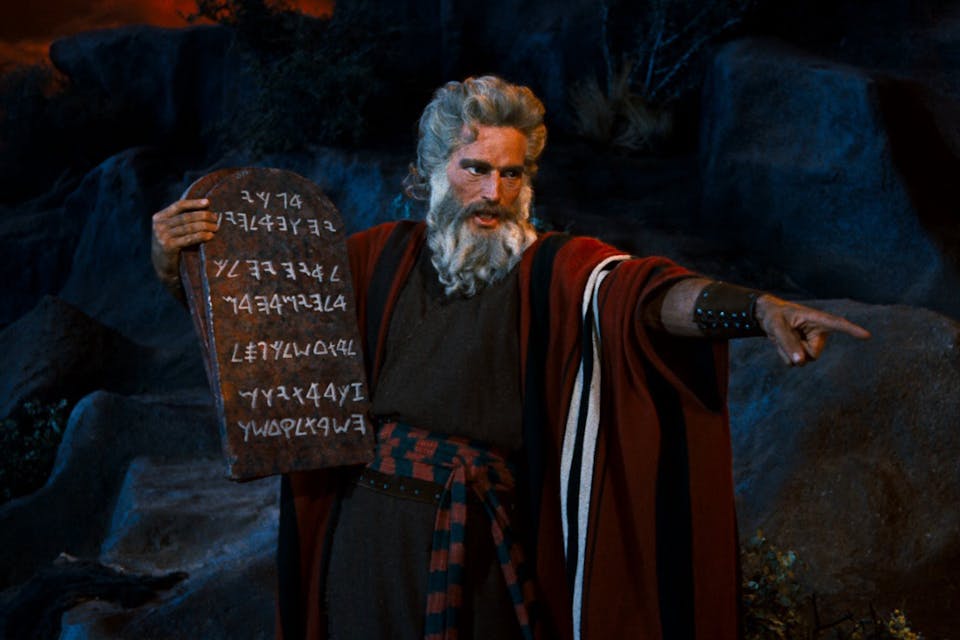
February 1, 2018
The Problem with the Tablets
The Cecil B. DeMille version of the revelation at Sinai, in which Moses ascends the mountain on his own and returns bearing tablets, misses key aspects of the Israelites' experience.
Near the end of Cecil B. DeMille’s The Ten Commandments (1956), Moses climbs Mount Sinai to receive the tablets of the Decalogue from God. He then descends the mountain, only to find the ungrateful Israelites immersed in wild pagan worship of the golden calf.
DeMille was hardly the first to render the stunned and furious image of Moses clutching the twin tablets, their message of the one God preemptively repudiated by its intended recipients, as the defining moment of the Sinaitic experience. Countless artists have done the same. Nor, at least at first glance, does that image seem to stray far from the biblical text. Yet I’d like to argue that it radically flattens and perhaps even misrepresents the Bible’s story of the revelation at Sinai.
Making sense of that story is admittedly complicated by its discontinuous and somewhat convoluted narration. The bulk of it appears in this week’s Torah reading of Yitro (Exodus 18-20), but then the narrative abruptly breaks off, resuming four chapters later before breaking off again, and finally picking up and concluding with the episode of the golden calf and its aftermath in chapters 31 through 34. To make matters even more complex, a slightly different version of the narrative is given at the beginning of Deuteronomy—again spread out over several chapters with interruptions, and in less than precise chronological order.